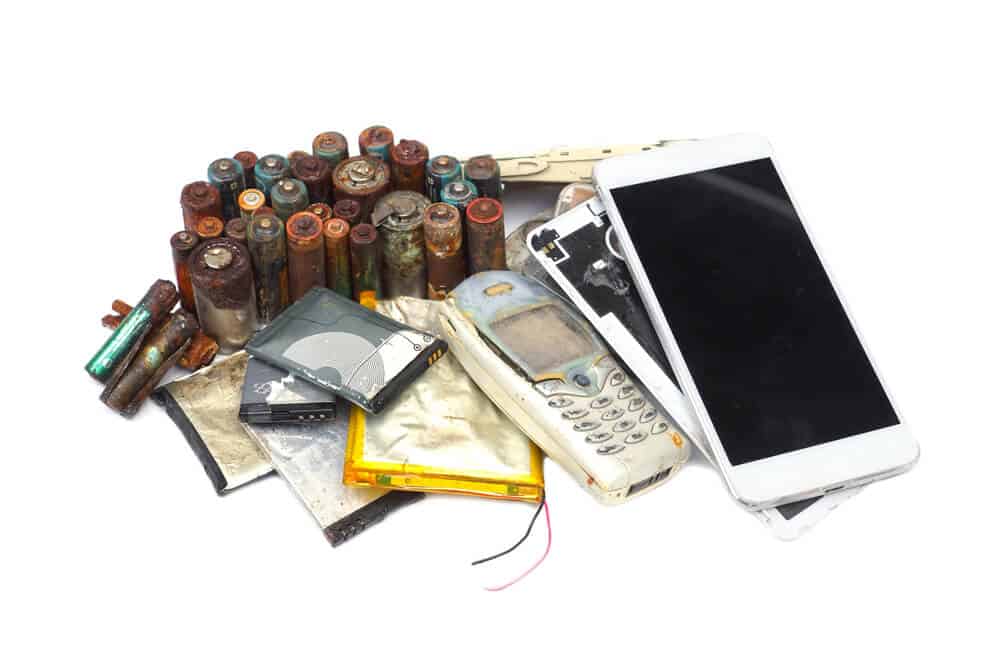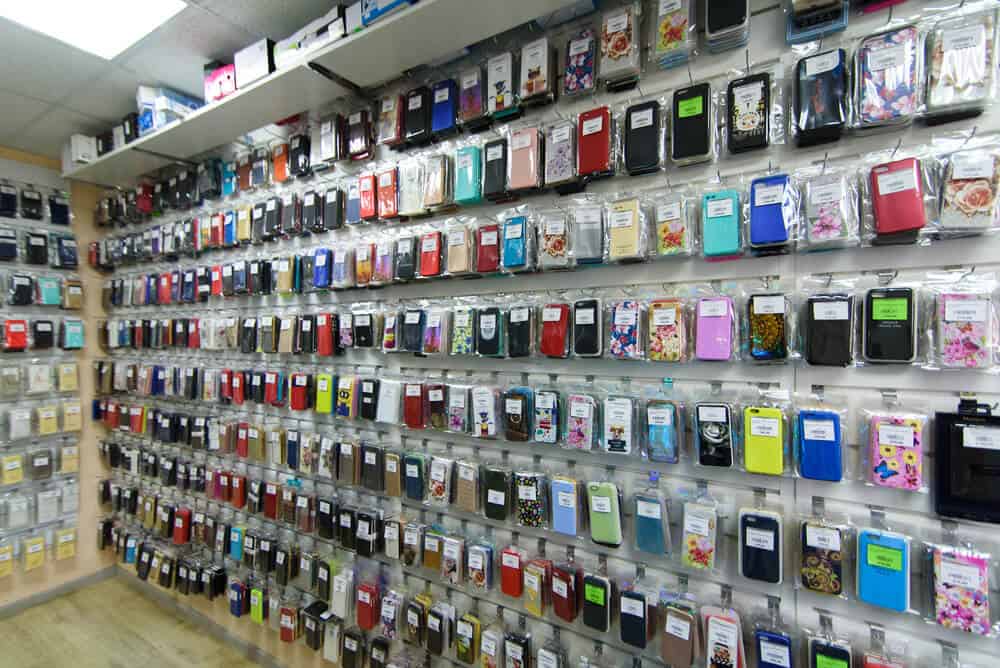A mobile phone is already essential in modern life. But did you know that over 1.5 billion phone cases are disposed of annually?
Experts have mixed reactions as to whether phone casing is a threat to the environment. Truth be told, it does.
Phone cases come from non-biodegradable materials. For this reason, I keep wondering; are phone cases bad for the environment?
This article will find out the impacts of phone cases on the planet when you toss them into landfills.
What To Look For In An Eco-Friendly Phone Case
Phone case materials. should be made from eco-friendly materials like plant-based or less synthetic, petroleum-based material.
- Phone case end of life. A perfect phone cover should fully decompose within a reasonable period of time.
Must-Have Qualities for an Ideal Phone Case
- Practicality. It the convenient to carry around
- Function. Offer protection to the phone
- style. Has a design that you like
The Making of Phone casings and How They Affect the Environment
Every phone that comes to the market poses a threat to the environment when consumers don’t dispose of phone covers properly.
Aforementioned, most phone cases are made of non-biodegradable materials.
These wastes are either incinerated, releasing tons of greenhouse gases, or disposed of in overflowing landfills.
Manufacturers use different materials used in making phone cases today.
They produce the best phone casing, but sadly none of them is fair to the environment.
If you are familiar with this, you probably know that most casings feature plastics, synthetic leather, silicon, and carbon fibers.
Let us break each of them individually and see to what extent they affect our environment.
Plastic
If you randomly pick any phone cover, there’s a high chance that two-thirds of your pickings will be plastics.
The PC(polycarbonates) are types of plastics that the phone industry prefers because of their durability, flexibility, and ease of manufacturing.
On the darker side, these materials take over 100 years to break down and decompose.
Through the decomposition process, the waste releases small particles to water and land.
These toxic materials find their way into the food chain, thus affecting every living creature.
Again, people will opt to burn the phone cases. This, too, isn’t safe for the environment.
They release clouds of carbon oxide, sulfur and nitrogen compounds which cumulatively form toxic gases.
Also, the smoke blurs visibility, clogs stomata, and causes asthma, which reduces the quality of life and kills the very components life revolves around- plants.
Silicon
Silicon is a lovable material most folks sort out to cover their phones with.
It is flexible, sturdy, and durable making it a good choice for manufacturers.
The durability makes it hazardous to the environment as it takes centuries to decompose.
Similar to plastic, it’s a non-biodegradable material.
A large dose of environmental pollution under silicon’s deadly wrath emanates from the production process.
Clouds of air pollutants leave the factory chimneys every day, resulting in acid rains and a poisoned atmosphere.
Also, small particles from silicon cases linger around in the air, which is detrimental to the environment.
Leather
To many, leather’s natural origin raises no ‘fingers’ to the environment.
This is just a passing cloud since leather leaves the environment at a lather state during the manufacturing process.
The dyes and chemicals used in softening and preserving leather can harm our planet. Unless this process employs bio-friendly preservatives, the effects of leather cases on the environment are similar to plastics’.
Rubber
Rubber cases form an excellent shock absorber that protects your phone from physical damage.
Though rubber and plastic cases share some norms, it is better to discuss each of them individually and how they affect everything that surrounds us.
Rubber being a natural product, it is believed it does less harm to the environment, but we can’t affirm this.
Scientists report that rubber will take over five decades to decompose, which is a fairly long time.
During decomposition, rubber releases chemical compounds that company’s use in the hardening and drying process.
These chemicals won’t sip down into the soil or water bodies without leaving a smoking trail of environmental effects.
Nevertheless, rubber and plastic cases go for rubber- it is less harmful to the environment.
carbon fiber cases
The carbon fiber case on your phone has a role to play in our environment.
Perhaps it is time you critique the option of issues you are buying.
It is so hard to say how carbon fibers affect the environment directly, but data shows that it consumes a lot of energy.
One ton of carbon fiber consumes 14 times the energy required to produce steel on a similar scale.
Where do we get such levels of energy required to produce carbon fiber phone cases? The answer is from natural resources.
A lot of fuel is required to produce that energy which translates to pollution from the production process.
If this habit continues, we will soon lose oil reserves, and gases from fossils will suffocate the atmosphere.
Also, carbon fibers are durable and don’t decompose, which means they pile up after disposing of them.
This problem affects the environment by reducing the size of land to give room for dumpsites.

Effects of phone cases on the environment
Phone cases as a whole contribute to environmental pollution in various ways;
Adds up solid wastes to landfills
Globally, governments are struggling with waste disposal because landfills overflow very fast.
Phone cases are often less competitive when we talk about who is filling landfills, but they have a hand on the environment.
On average, a phone case weighs 20 grams, and because consumers get rid of more than 1.5 billion cases each year, the total weight hits 30 tons.
This is a drop in the ocean compared to what the earth takes up from plastic, but its effect will never go unrecognized.
Take, for instance, an average household produces almost half a ton of wastes per year.
Thirty tones of phones worldwide are equal to a small village’s total wastes.
Most casing being non-biodegradable materials will stay in the same state for long – only a few pounds disappear annually.
While you dispose of more phone cases, the current lot will still be intact, adding more weight to the environment.
Within a decade or so, landfills will be holding more than 300 tons of waste.
Each time we pile wastes, the environment loses its sustainability.
The production process of cases causes environmental degradation
During the manufacturing process of all synthetic products, wastewater and gases from the factory impact the immediate surroundings.
Silicone covers release toxic wastes to water bodies killing fish and microorganisms.
This destabilizes the delicate food chain in the area, thus bringing down the entire ecosystem.
Moreover, silicon particles cause lung disease, including cancer in humans, and affect growth in plants.
In a normal situation, silicon is very helpful, but with unnatural supply from the factory, it is obvious it will cause pollution.
Air pollution is the most disturbing form of pollution coming from phone casing factories.
It reduces the general lifespan of both plants and animals by causing diseases and acid rain.
In animals, particularly humans, there’s a rise in asthma cases and other underlying diseases.
Humans evolved to be part of the environment, and if they slowly vanish, there will be a vacuum.
The environment will die eventually.
Natural resources invested in phone cases destroy the environment
Leather phones are only available because certain animals had to sacrifice their lives for their precious skin.
Less suspected animals include ostriches, hogs, and bison.
If we remove bison from the prairies, the natural flourishing natural ecosystem in those areas will break down.
This is an example of how leather cases are lethal to the environment.
When it comes to mining silicone, the cutting down of trees to pave the way for mining pits will disturb the environment.
Environmentalists continue to pour out worrying news on how open pits kill entire plant species in particular areas.
The ripple effect of this is some insects and animals too will disappear due to insufficient food.
Plastic and rubber from phone casings share the same fate in polluting the environment.
On the flip side, carbon fibers and silicon have adverse effects on living organisms and energy.
Leather, too, isn’t an exception as it contributes to environmental risks indirectly through dyes and chemicals industries use for its treatment.
The biodiversity in the immediate surrounding gives in and dies out, leaving the area deserted.
At the same time, the fish and marine creatures on the other far end sadly disappear. All these problems are from a simple product- a phone case.
Wrap up
The simple answer to our question, ‘are phone cases bad for the environment is now clear. It depends.
Plastic phone cases will take a longer time to biodegrade.
If we continue throwing away a good number of phone cases without consideration, this isn’t a sustainable practice.
We should watch out!


